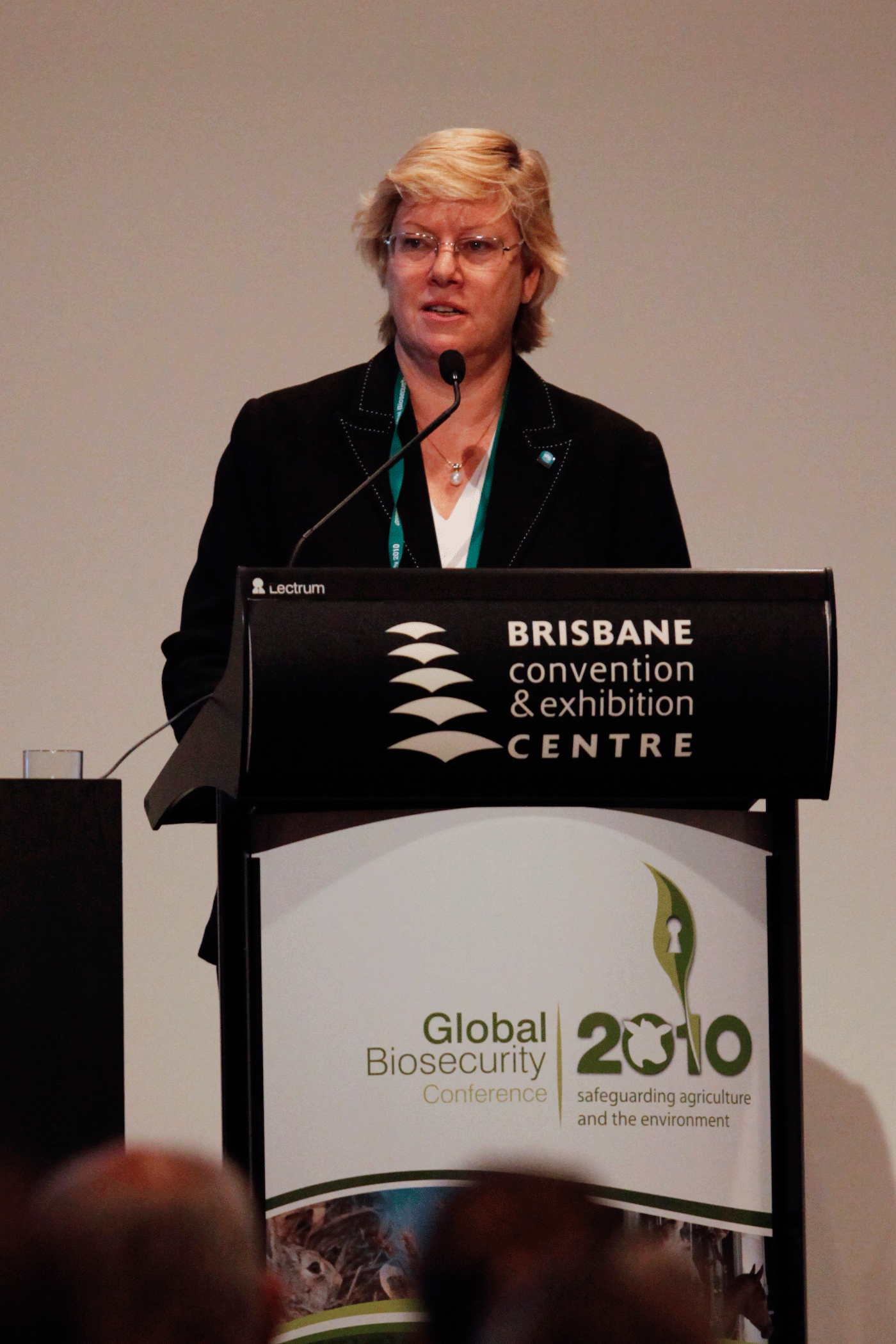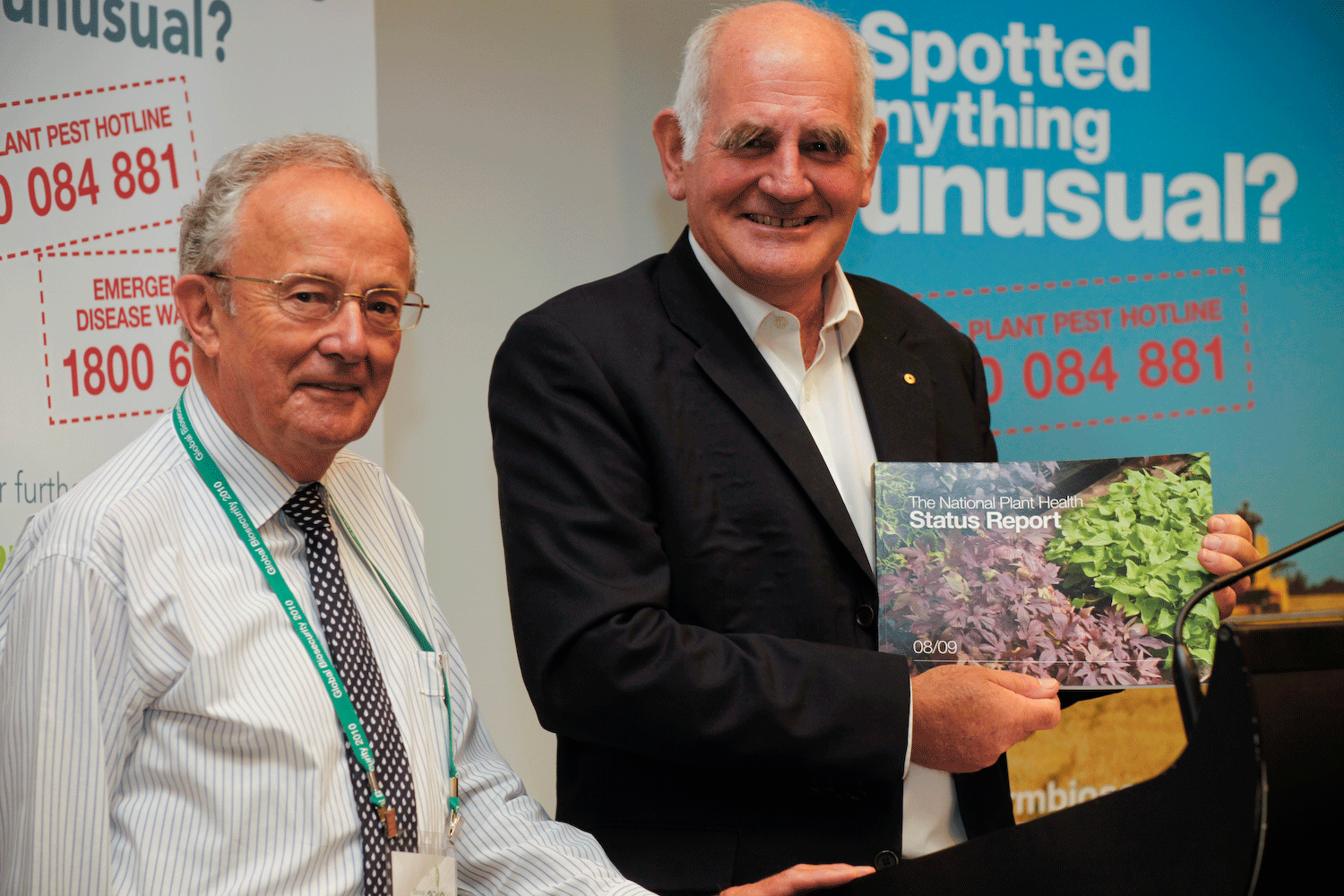Global Biosecurity 2010 wrap up
Agricultural and environmental biosecurity experts from across the globe gathered in a very wet and windy Brisbane last week for the world’s first biosecurity conference addressing this issue.
The conference kicked off with a Welcome Reception on Sunday night (28 February) sponsored by the Australian Quarantine and Inspection Service. Conference delegates were able to wander around the 14 exhibition booths during the evening to learn more about the various exhibiting organisations and their role in biosecurity. We had a corporate stand to showcase the variety of our research portfolio while our digital diagnostics project team partnered with Dino-Lite microscopes to demonstrate the application of the remote microscope network.
Mr Rick Hawe, Regional Manager for AQIS’s north-east region gave a short address explaining AQIS’s role in the Department of Agriculture, Food and Fisheries Biosecurity Services Group and how they contribute to the biosecurity system through effective quarantine measures at the border.

CSIRO, Chief Executive, Dr Megan Clark officially opened the conference on Monday morning.
During her address, Dr Clark said the threat of invasion is increasing due to global trade, climate change, people and animals more on the move, agricultural change and increased global poverty.
“Business as usual will not prepare Australia for the future,” she said.
“We need to keep making the point that this challenging issue can be addressed if all sides are willing to engage openly in dialogue, learn from our experiences and work together to prepare Australia and the globe for the future. Now more than ever we need to look at partnerships to address these challenges.”
Promoting international partnerships and collaboration were a key element of the conference with people across the agricultural and environmental sectors sharing and exchanging the latest biosecurity research into drivers, threats and impacts, knowledge and systems.
With many new biosecurity technologies being used in areas such as surveillance and diagnostics, the conference encouraged people to think about how these ideas and research could be applied in an environmental, plant or livestock context.
The conference also included keynote addresses from Western Australia’s Department of Agriculture and Food, Director General, Mr Rob Delane; Dr Gordon Gordh from the United States Department of Agriculture (USDA); Dr Angus Cameron from AusVet’s Animal Health Services; Chevron Australia’s Mr Johann van Der Merwe; Professor Mick Clout from Auckland University and USDA’s Mr Bob Griffin.
During the conference, Dr Tony Gregson, Chairman of Plant Health Australia launched the National Plant Health Status Report.

The 180 page report provides a wealth of information covering the plant pests of greatest concern to Australian industries, the organisations and processes involved in keeping Australia’s agricultural and forestry industries free from pests, and innovative plant health research projects currently being undertaken by Australian research organisations and universities. It is a consolidated summary of the system that helps protect Australian agricultural and forestry industries, worth more than $45 billion a year, from exotic pests.
“This Report provides policy and decision makers across governments and industries an overview of the sophisticated biosecurity system responsible for protecting Australia’s food supply and product markets. It is a useful reference manual for educators and those providing support and commercial services to the plant industry. It also demonstrates the robustness of Australia’s plant health system and should build confidence in the quality of Australian plant products,” said Dr Tony Gregson.
The National Plant Health Status Report identifies, among other things, details for the 2008-09 financial year including nearly 300 high priority plant pests that are exotic or of significant quarantine concern to Australia. It also highlights over seven hundred biosecurity research and development projects currently underway or completed in Australia, and the 137 surveillance programs targeting plant pests of concern across the country. A copy of the report can be found on PHA’s website.
The conference dinner on Tuesday night was a highlight of the social program
(see separate article). The conference closed on Wednesday afternoon with delegates leaving with new knowledge across the field of biosecurity as well as many new contacts in this area. From all verbal feedback received to date, the conference was an overwhelming success.
Images: (source Di Harris photographic)
CSIRO's Dr Megan Clark officially opens the Global Biosecurity 2010 conference
CRCNPB Chairman, Professor John Lovett with PHA's Chairman, Dr Tony Gregson at the launch of the National Plant Health Status Report

